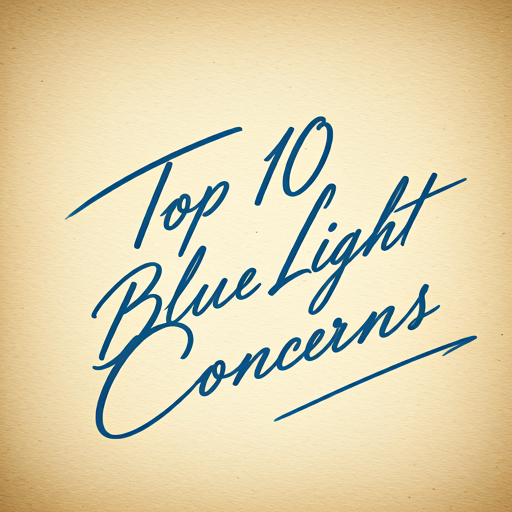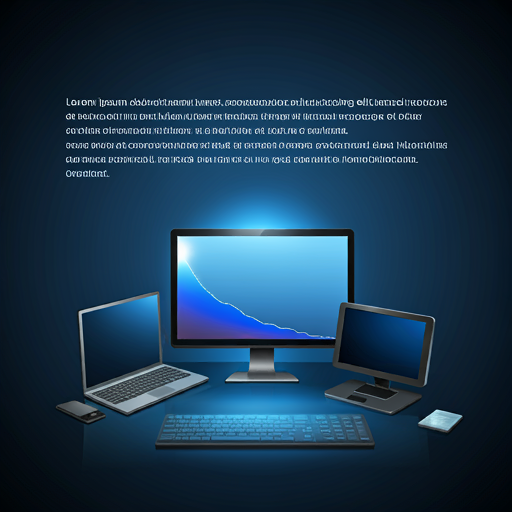Liquid Crystal Displays or LCDs seem omnipresent in our technology-enabled lives because they seem installed in everything-from the latest smart phones and tablets to TVs and computer monitors. Blue Light Concerns No doubt, LCDs changed the way we consumed digital content totally, but more research has been put forth regarding the nasty blue light coming from these monitors. This article covers exposure to blue light coming from LCD, its potential health effects, and how to reduce one’s risks.

What is Blue Light in Blue Light Concerns
The human eye perceives this as seeming to be short-wavelength, high-energy light within the visible portion of the light spectrum. While artificial lights do produce a lot of blue light, the original and primary source is natural daylight. Blue Light Concerns This kind of lighting, while clearly necessary for regulating one’s circadian rhythms and sense of alertness during the day, produces significant health and wellness risks when it is experienced in high doses, especially after sundown.

Health Concerns Regarding Blue Light in Blue Light Concerns
Sleep has emerged as one of the major issues regarding blue light. This is basically a sleep hormone, and its exposure has been reduced. In all cases of screen usage, especially at night, the natural sleep pattern will be distorted in some way to contribute to one not falling asleep easily or sleeping but not resting well, thus making someone feel more tired during the day. As proven by a high multitude of studies, prolonged exposure to blue light before one sleep activates a chain of factors against the duration and productivity of sleep Blue Light Concerns.
2. **Digital Eye Strain**: Prolonged usage of LCDs leads to digital eye strain by causing dryness and irritation in the eyes and blurred vision. It can also be accompanied by headaches. Apparently, this condition of eye strain is said to be caused by many factors that range from screen exposure to posting positions and lighting. Blue Light Concerns However, it is usually the exposure of the blue light to man that tends to cause more discomfort in the situation. The high energy associated with the blue light tends to increase the workload on the eyes, which might result in their inability to carry out any activity as it would have been accomplished if more energy was spent.
3. **Chances of Retinal Damage**: Some research has become successful in proving that retinal damage can be associated with high intensities of blue light in causing AMD. Yet, there are, to-date studies in this area and people associate the increased dependency on high-intensity sources of blue light may result in the accumulation of harmful effects on the retina Blue Light Concerns.

Filters in Blue Light Concerns
With an overview of the risks emitted by blue light, a few precautionary measures can be easily adopted like;
1. **Blue Light Filters**: All devices sold now of course will reduce the colour temperature of the screen to warm colours automatically, when the “night mode” or “reading mode” is enabled. There’s also a particular blue light filtering software that users can download for their devices Blue Light Concerns.
2. **Blue Light Blocking Glasses**: There are glasses that opt to block the emission of blue light, especially for individuals who tend to spend a huge amount of time in front of screens. They really minimize the problem considerably and expose the user to considerably reduced blue light, particularly when used in the evening.
3.Healthy screen habits One of the better habits which one can adopt in order to have minimum side effects of increased screen time is the 20-20-20 rule. Blue Light Concerns The users are supposed to take break after every 20 minutes and view something 20 feet away. In this way, the muscles around the eyes relax and eye fatigue is minimum.
4. Limit screen time before bedtime, and reduce overall exposure to screens a few hours before sleep. One always has a great chance of better sleep when reading a book or even meditating.
Proper Setup of Work Station: Work stations may have bright screens and configured such that glare is not visible. Hence, the inconvenience in the eyes of the users may be minimized. Setting of ambient light intensity may also be so configured to be eye friendly.
Conclusion
Whereas LCDs are such a daily companion that mitigates a lot in day-to-day life, the emission of blue light cannot be ruled out. This calls for an awareness of the risks that may be attached to blue light and implementing strategies to cut down on the risks in its face while still enjoying all the benefits of modern technology intact. As dependency on digital devices grows, the care of one’s eyes coupled with proper screen practices will form a very important limb for general health if people are to stay indoors in front of screens.
FAQS
What is the concern about blue light?
It’s safe to say most of us spend a lot of time staring at screens. And that can be bad for our eyes. Blue light from electronics is linked to problems like blurry vision, eyestrain, dry eye, macular degeneration, and cataracts. Some people have sleep issues.